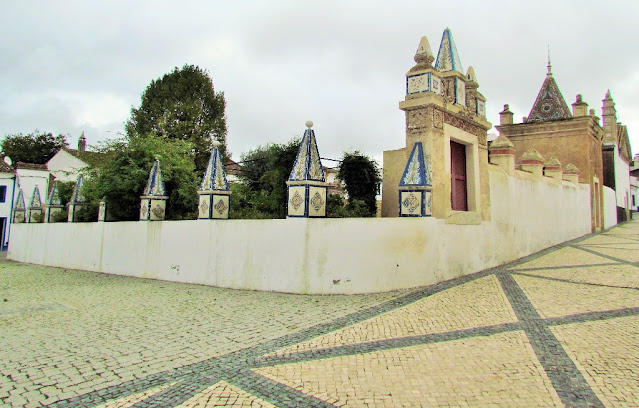ALCÁCOVAS
N 38.39256º; W 8.15353º
Alcáçovas is a Portuguese parish in the municipality of Viana do Alentejo, in the Alentejo region, with an area of 268.13 km² and 2,111 inhabitants (2011). Its population density is 7.9 inhabitants / km².Since time immemorial, the village of Alcáçovas has been home to the art of rattles.
The place is the center of Arte chocalheira, a traditional craftsmanship of animal bell making, which was inscribed on UNESCO's list of intangible cultural heritage in urgent need of conservation in 2015.
Historically, the place played a role several times as a stately residential city. The many typical desserts from Alcáçovas, mostly attributable to the Doçaria Conventual, have predominantly their origin in this environment.
Documents suggest that the place as part of the Roman province of Lusitania under the name Castreleucos (roughly: White Castles) was a place on the Roman road from Ebora Liberalitas Julia (today Évora) to Salacia (today Alcácer do Sal).
From 711 AD the place was conquered by the Arabs and was part of Al-Andalus until the Christian conquest in the 13th century. The origin of today's place name (from the Arabic al-Qasr for fortress) is traced back to the Moors, who are likely to have rebuilt the two old Roman fortifications here.
King D. Dinis confirmed the town charter from Évora on April 25, 1279, and had the two local fortresses rebuilt around 1309, with one being converted into a royal residence. The former garrison chapel of the second complex, which continued to be used as a fortress, was preserved as today's parish church.
In the royal residence, today is mostly known as Paço dos Henriques, the Treaty of Alcáçovas was signed on September 4, 1479, which ended the War of the Castilian Succession. The parents of the Portuguese King D. Manuel I married here in 1447, and the marriage of the parents of Queen Isabella I of Castile was negotiated here around 1447. King D. João II signed his will here on September 20, 1495, with which he appointed his cousin D. Manuel I as his successor.
💓💓💓💓💓
SEARCH IN ALPHABETICAL ORDER
IN THE DISTRICT OF ÉVORA

Mora;
💓💓💓💓💓
Return to mainland Portugal &
the Azores and Madeira islands



















































































